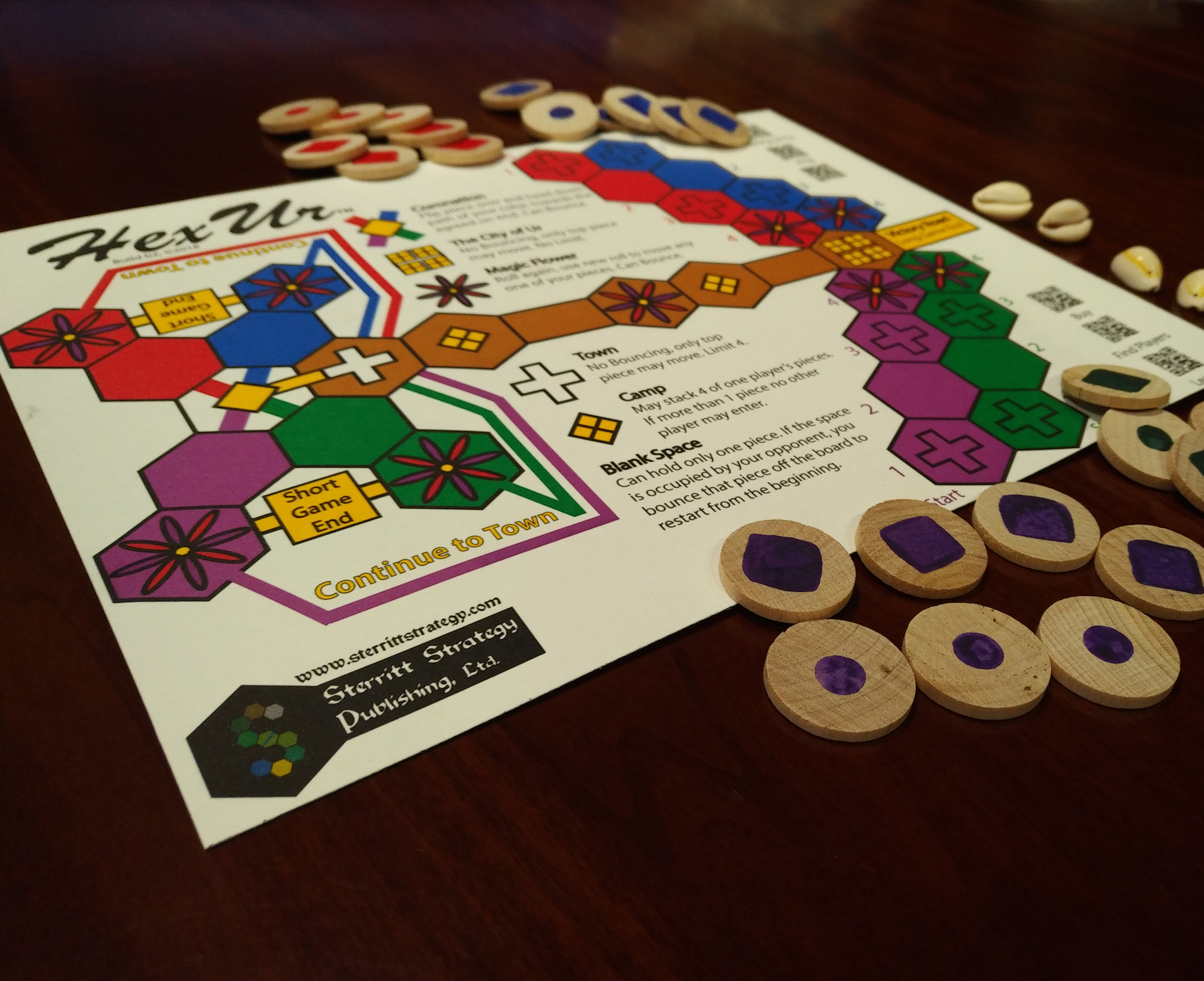HexUr
Background:
HexUr is a new take on the ancient Mesopotamian Game of Ur. A racing game adapted to fit four players, and by doing so making the game more intense.
The Sumerian City-state of Ur had long been shrouded in mystery and lost under the desert sands. 'The Royal Game of Ur' was so named because it was rediscovered in the royal tombs at Ur by Sir Leonard Woolley in the 1920’s. Upon further excavation, it turned out not to just be a game for the nobility, but a popular game played from India to Crete. Ur is a 'race' game where players attempt to complete a circuit of the board while avoiding being knocked off by the other player.
The original game of Ur was played in the Mesopotamian region from approximately the early 3rd century B.C.E until around the 1st century C.E. This makes the game a rough contemporary of Senate, which was played in Egypt. They are both precursors to the game of backgammon. Ur has appeared in several forms in the archaeological record from graffiti on statues, to its more usual form of a wooden board.
The rules were originally thought lost to time, until in the early 1980s, Irving Finkel, a curator for the British Museum and noted Assyriologist, translated a cuneiform tablet written by an Itti-Marduk-balālu sometime around 177 B.C. This tablet turned out to be the rules of the game of Ur. Since then, further descriptions of the rules of the game were translated by other researchers and now the game with no known rules has many debates over which era of rules are purest, or which era's rules should be used. HexUr uses a rule set based on Irving Finkle's more complicated version.
The game has been tied to ancient gambling where several archaeological digs have found either white ceramic balls or other items used as markers for wagers. However, no clear rule as to how to place a wager has been discovered, yet. Others claim the game had a spiritual significance, and that success in Ur relates to success in life, and that certain rolls of the dice were omens. It has also been proposed that Ur tells the tale of Gilgamesh, or some other hero-king, where the prince must go out into the desert to commune, or otherwise deal, with the gods and be made king. Alternatively, it is the story of the prince having to climb the Ziggurat of Ur to marry Innana or Ishtar and return to be proclaimed king.
You may notice that HexUr is not an exact replica of Ur. A few aspects of the game have been changed to adapt it for the modern era. While Ur is a two-player game, HexUr has been expanded to allow up to four players. This version is based off the rule set translated by Irving Finkel. Cowrie shells are used for dice, which were in use through the era the game was played. As such the two-player version of HexUr would be recognizable to a Bronze age player, though they might have a question or two about your board.
Travel back to Ur, pit your skill against your opponents. The first player to travel to the ancient city, crown all their pieces king and exit the board shall rule victorious. Beware, there are cunning rivals and dauntless pitfalls that can topple even the greatest king from their path.
Archaeological Record:
The Game of Ur, or the Game of Twenty Squares as it is called by its Sumerian players, is one of the oldest games in the Archaeological record. The oldest set of Ur dates to somewhere between 2,600 and 2,400 B.C.E. (Dynasty III for those Assyriologists out there), which, even conservatively, puts the Game of Ur as being played either at the same time as the construction of Stonehenge. Ur has been found to have permeated the Ancient world from Crete to India. Being found in tombs of Kings, possibly Pharaohs, priests and commoners. The Game of Ur outlasted the settlement at Ur continuing to be played into the 1st century C.E..






